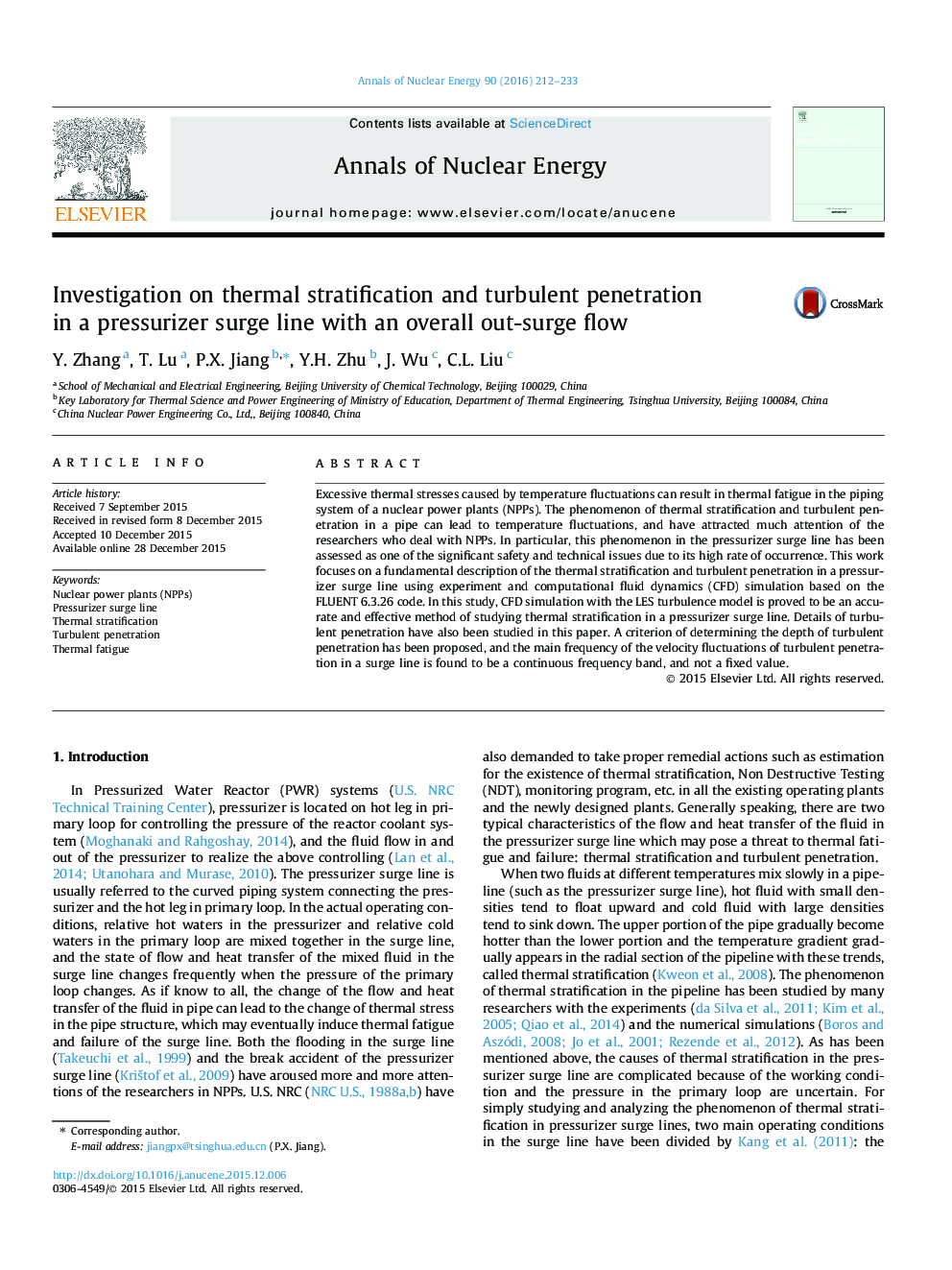| Article ID | Journal | Published Year | Pages | File Type |
|---|---|---|---|---|
| 1727925 | Annals of Nuclear Energy | 2016 | 22 Pages |
•The most violent thermal stratification was predicted with experiment and CFD simulation.•The turbulence of the flow in thermal stratification was captured with the LES method.•A criterion of determining the depth of turbulent penetration has been proposed.•Frequency of the velocity fluctuations in turbulent penetration is a continuous frequency band.
Excessive thermal stresses caused by temperature fluctuations can result in thermal fatigue in the piping system of a nuclear power plants (NPPs). The phenomenon of thermal stratification and turbulent penetration in a pipe can lead to temperature fluctuations, and have attracted much attention of the researchers who deal with NPPs. In particular, this phenomenon in the pressurizer surge line has been assessed as one of the significant safety and technical issues due to its high rate of occurrence. This work focuses on a fundamental description of the thermal stratification and turbulent penetration in a pressurizer surge line using experiment and computational fluid dynamics (CFD) simulation based on the FLUENT 6.3.26 code. In this study, CFD simulation with the LES turbulence model is proved to be an accurate and effective method of studying thermal stratification in a pressurizer surge line. Details of turbulent penetration have also been studied in this paper. A criterion of determining the depth of turbulent penetration has been proposed, and the main frequency of the velocity fluctuations of turbulent penetration in a surge line is found to be a continuous frequency band, and not a fixed value.
